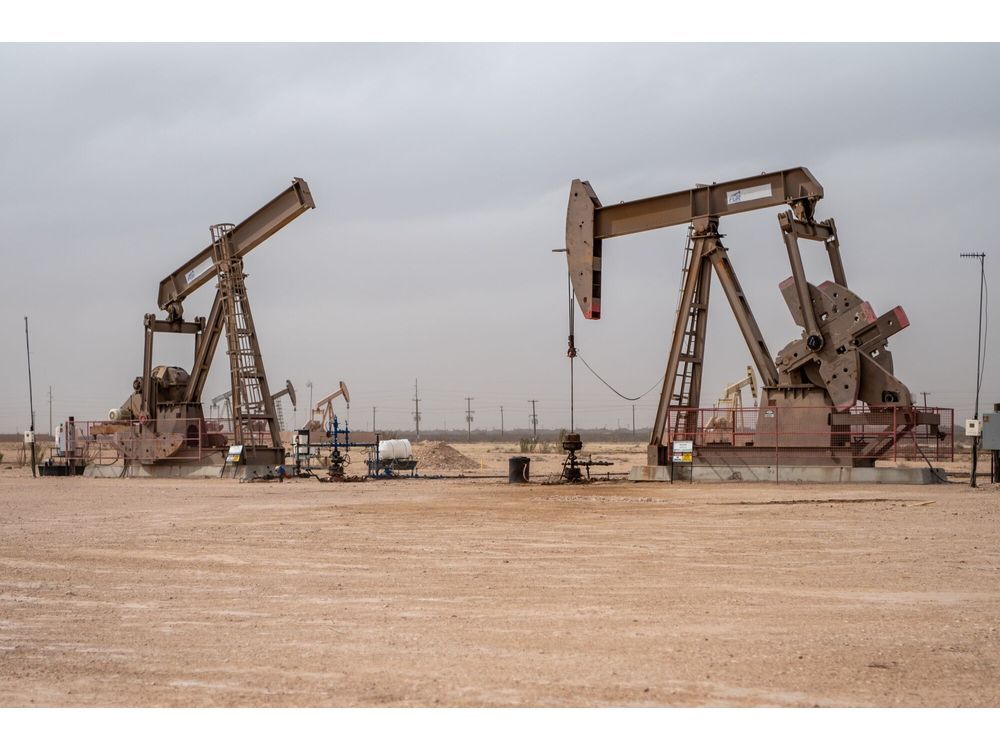
Article content
(Bloomberg) — Oil fell to near the lowest level since mid-March, with a mildly bearish US stockpile report and tensions in the Middle East in focus.
Brent dipped below $83 a barrel, after dropping to the lowest since March 13 on Tuesday, while West Texas Intermediate declined toward $78. Crude stockpiles at the Cushing, Oklahoma, hub rose by more than 1 million barrels last week, the American Petroleum Institute estimated, according to people familiar with the figures. The breakdown also showed higher nationwide holdings of gasoline and distillates. Official data come later Wednesday.
Article content
In the Middle East, Israel’s military edged into the Gazan city of Rafah, with a truce between the Jewish state and Hamas remaining elusive.
Oil has been on a downtrend since early April, posting losses in three of the past four weeks, with indicators from timespreads to processing margins pointing to a weaker outlook. Brent and WTI’s prompt spreads have narrowed to multi-month lows, suggesting that conditions are becoming less tight. In addition, profit margins of making fuels like diesel have also declined.
While there’s weakness amid rising stockpiles and fading geopolitical threats, there’s “support coming from ongoing supply-side risks,” said Han Zhong Liang, an investment strategist at Standard Chartered Plc, citing factors including the looming June OPEC+ meeting and renewed curbs on Iranian and Venezuelan oil. “We think that markets are under-pricing these risks in the near term.”
The Organization of the Petroleum Exporting Countries is due to meet next month to assess supply policy after implementing production cuts over the first half of the year in a drive to support prices. Most traders expect that the curbs will be extended, possibly to the year-end, according to a Bloomberg survey.
To get Bloomberg’s Energy Daily newsletter into your inbox, click here.
Share this article in your social network